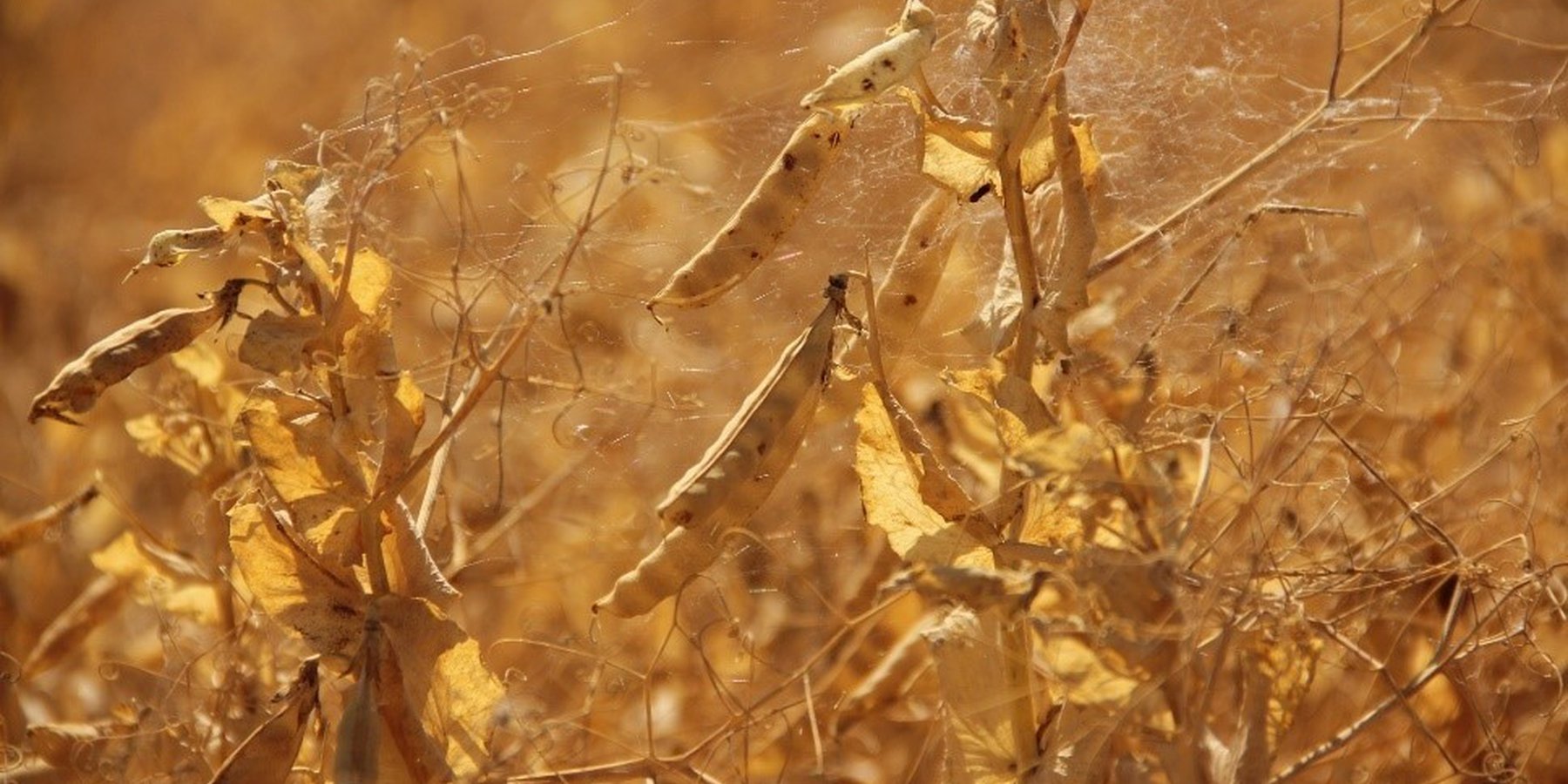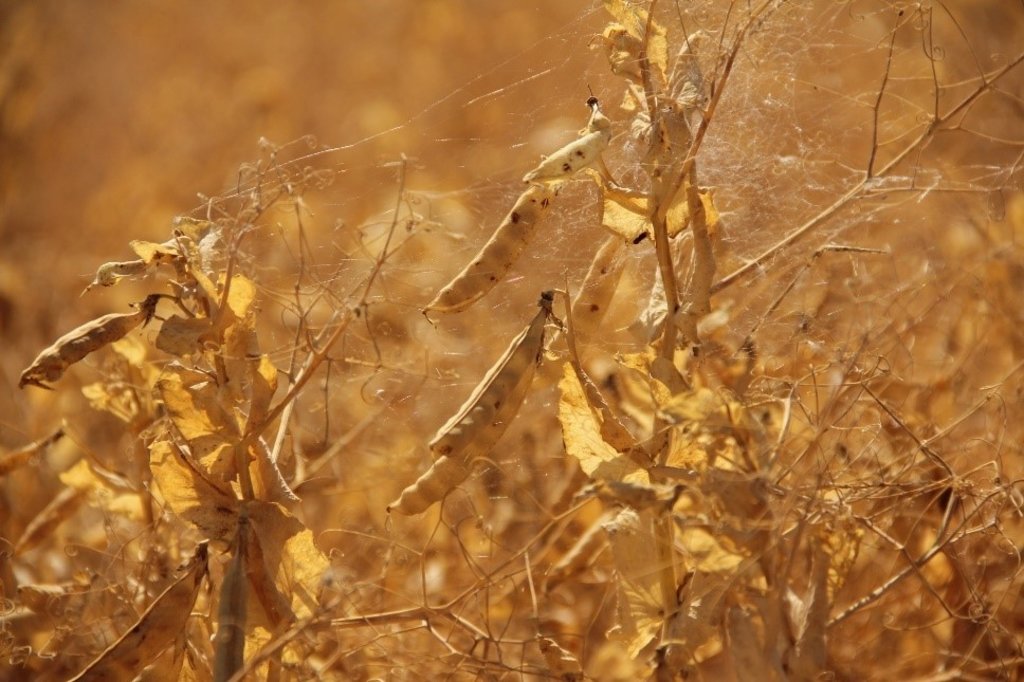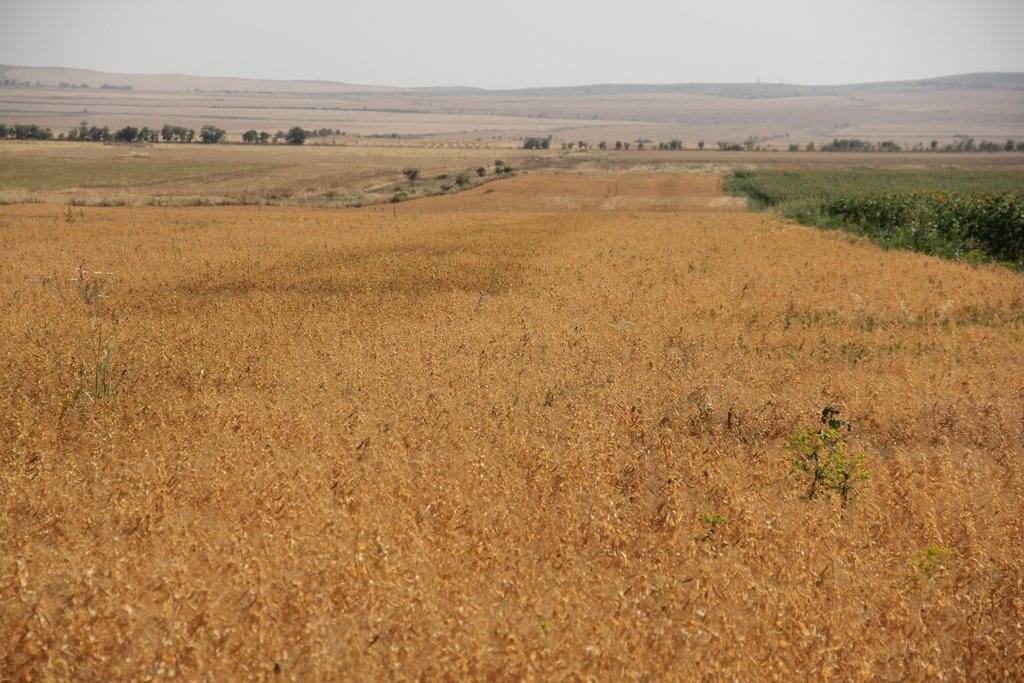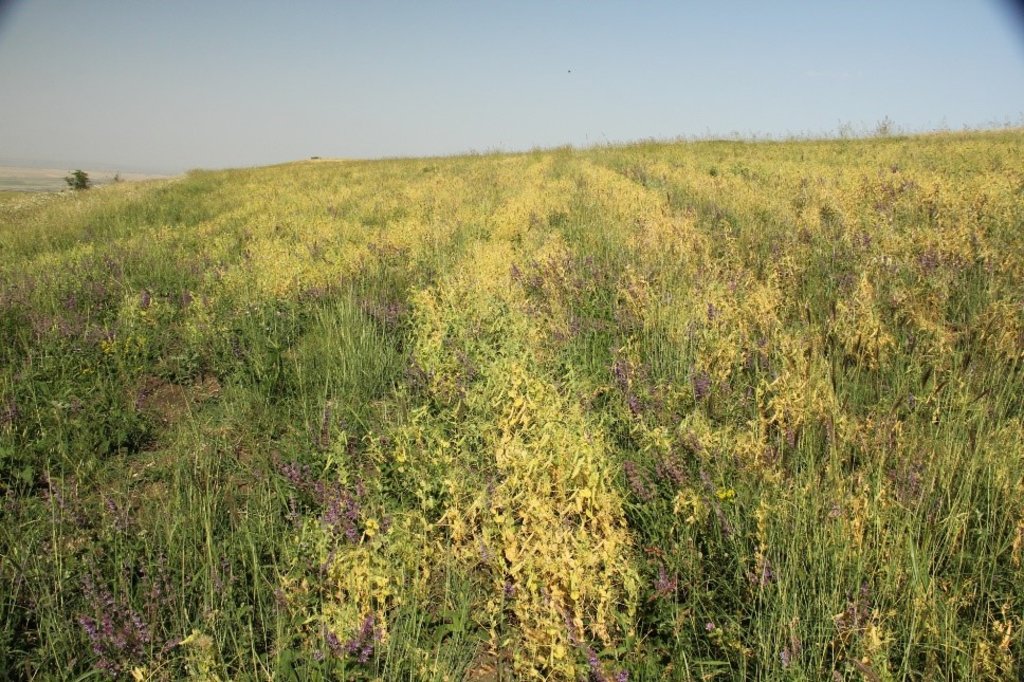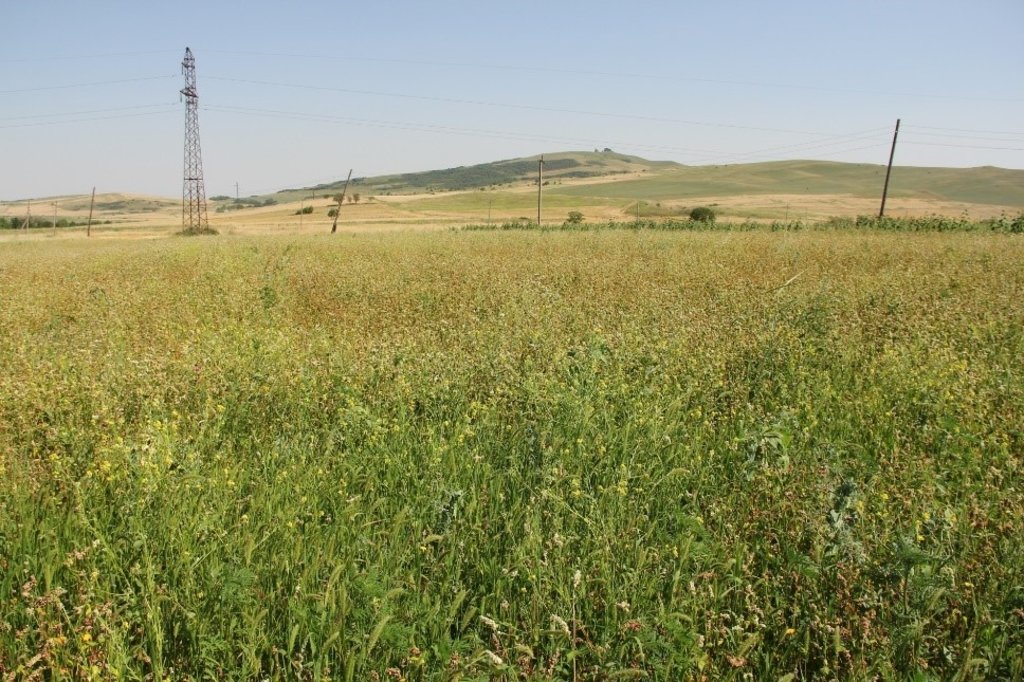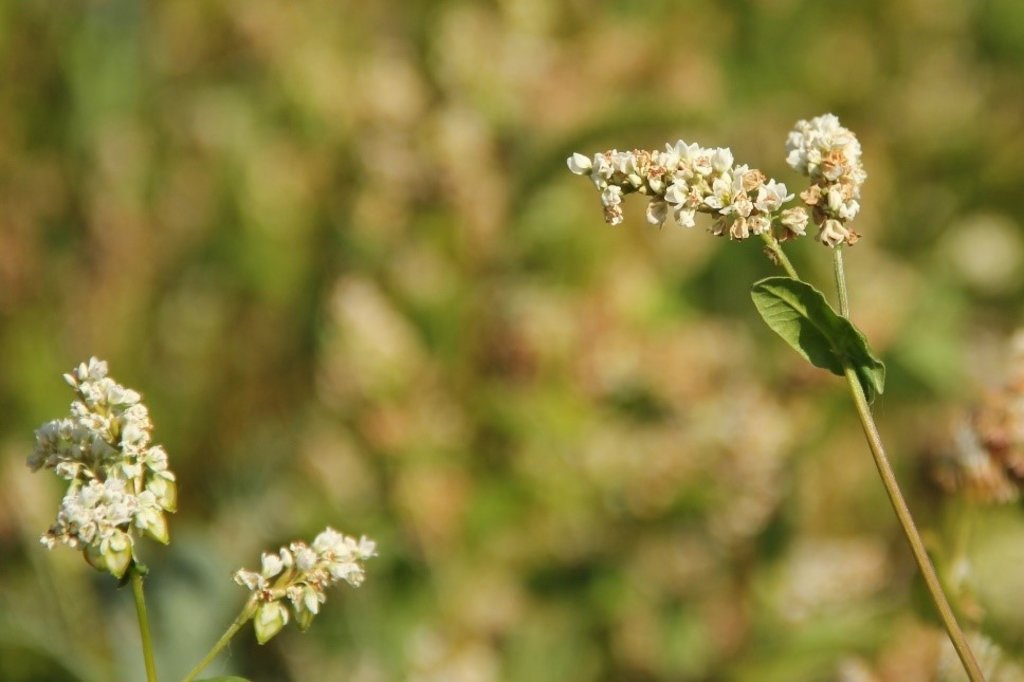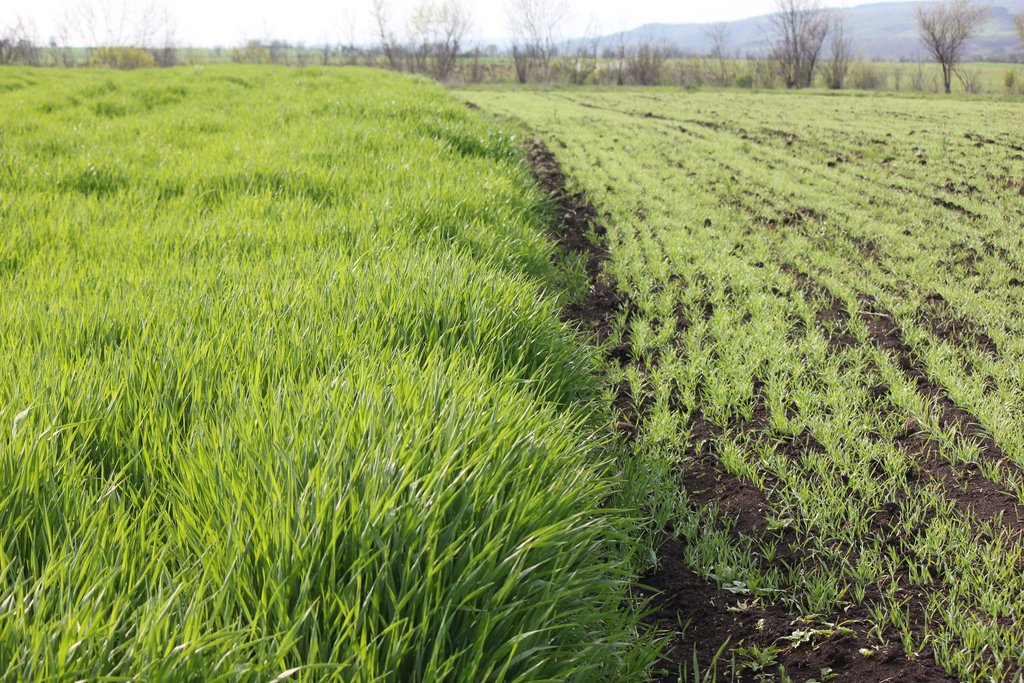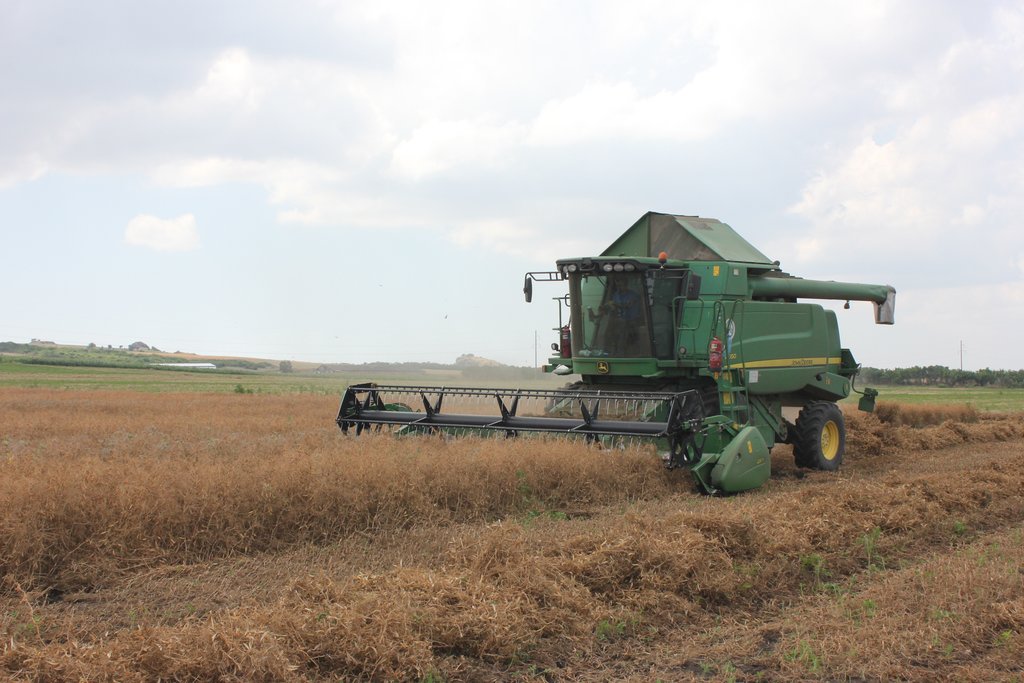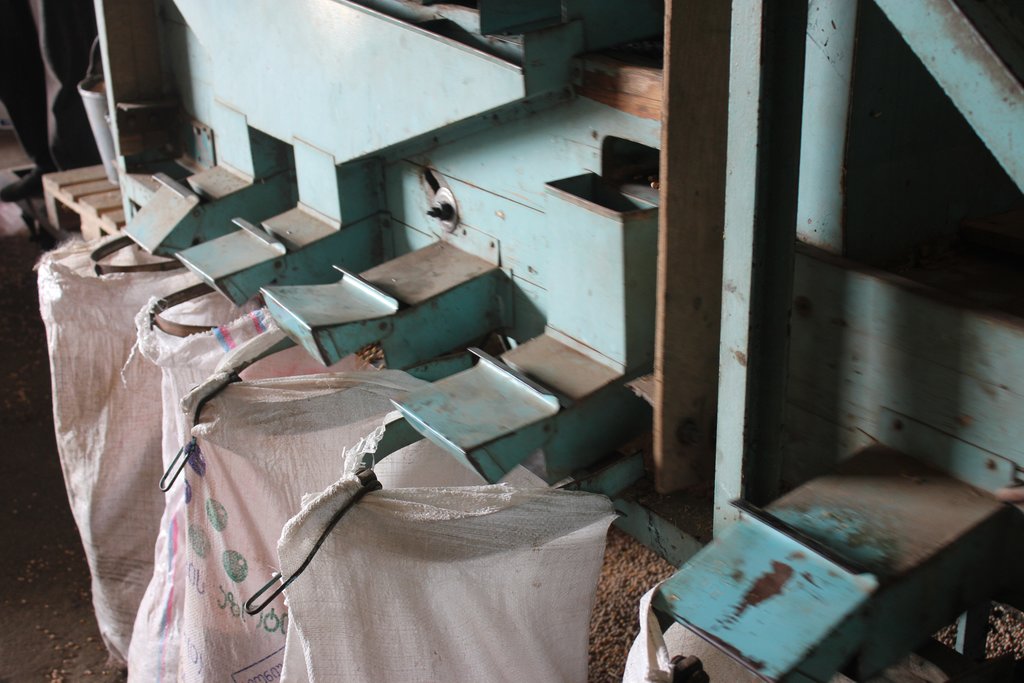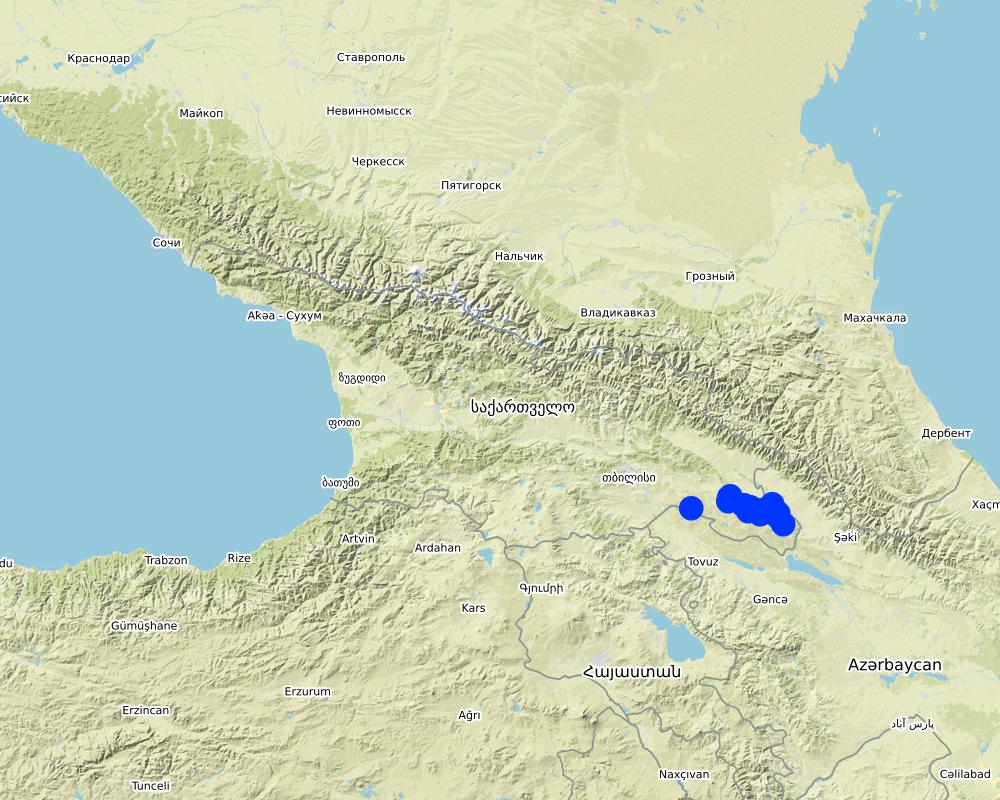Introduction of Crop Rotation [Georgia]
- Creation:
- Update:
- Compiler: Hanns Kirchmeir
- Editor: Kety Tsereteli
- Reviewer: Ursula Gaemperli
technologies_4275 - Georgia
View sections
Expand all Collapse all1. General information
1.2 Contact details of resource persons and institutions involved in the assessment and documentation of the Technology
co-compiler:
Name of project which facilitated the documentation/ evaluation of the Technology (if relevant)
Applying Landscape and Sustainable Land Management (L-SLM) for mitigating land degradation and contributing to poverty reduction in rural area (L-SLM Project)Name of the institution(s) which facilitated the documentation/ evaluation of the Technology (if relevant)
Regional Environmental Centre for the Caucasus (REC Caucasus) - Georgia1.3 Conditions regarding the use of data documented through WOCAT
The compiler and key resource person(s) accept the conditions regarding the use of data documented through WOCAT:
Yes
1.4 Declaration on sustainability of the described Technology
Is the Technology described here problematic with regard to land degradation, so that it cannot be declared a sustainable land management technology?
No
2. Description of the SLM Technology
2.1 Short description of the Technology
Definition of the Technology:
In the municipality of Dedoplistskaro, Georgia, 100 ha of land have been cultivated with peas on approx. 25 fields (each 1-10 ha in size). The introduction of peas as an alternative crop that is now used in rotation with wheat, helps to increase soil fertility sustainable and ecologically.
2.2 Detailed description of the Technology
Description:
Dedoplistskaro is located in the Shiraki Plain, in eastern Georgia, and consists of steppes, where grain crops are cultivated and livestock is grazed in the winter. The steppic soils are dominated by Chernozems and Kastanozems, the climate is warm and temperate and the small-scale land (2-5 ha) is in individual ownership. The labour including plowing, seeding and harvesting is fully mechanised, the machines are mainly borrowed from agricultural machinery cooperatives and less often from private machinery suppliers. For the inhabitants of Dedoplistskaro municipality, agricultural production is an important source of income. 74% of the Georgian wheat production is located in the Kakheti region. Shiraki valley has a great share of this. The area of wheat production in Dedoplistskaro is 13,693 ha (Census 2014). Securing the productivity of arable land and stopping degradation due to the loss of soil fertility is of local and national importance. The introduction of pea as an alternative crop, which can be used in rotation with wheat or other crops, should help to increase soil fertility in a sustainable and ecologically viable way. Pea is a plant from the legume plant family. The root system of Pea can thus fix nitrogen from air by symbiotic bacteria. This helps to increase the C/N ratio in the soil leading to higher decay rates of organic carbon (e.g. from straw residuals) and higher fertility of soils. Most farmers sowed on 23 and 24 March 2018 - some until 29 March 2018. Later sowing led to lower yields.
2.3 Photos of the Technology
2.5 Country/ region/ locations where the Technology has been applied and which are covered by this assessment
Country:
Georgia
Region/ State/ Province:
Kakheti
Further specification of location:
Dedoplistskaro
Specify the spread of the Technology:
- evenly spread over an area
If the Technology is evenly spread over an area, specify area covered (in km2):
1.0
Is/are the technology site(s) located in a permanently protected area?
No
Map
×2.6 Date of implementation
Indicate year of implementation:
2018
2.7 Introduction of the Technology
Specify how the Technology was introduced:
- through projects/ external interventions
3. Classification of the SLM Technology
3.1 Main purpose(s) of the Technology
- improve production
- reduce, prevent, restore land degradation
- create beneficial economic impact
3.2 Current land use type(s) where the Technology is applied
Land use mixed within the same land unit:
No

Cropland
- Annual cropping
Annual cropping - Specify crops:
- cereals - wheat (spring)
- legumes and pulses - peas
- buckwheat
Number of growing seasons per year:
- 1
Is intercropping practiced?
No
Is crop rotation practiced?
Yes
If yes, specify:
Crop rotations with wheat, pea and buckwheat. Different systems, one example: Year 1: Wheat, Year 2: Pea, Year 3: Wheat, Year 4: Wheat, Year 5: Buckwheat, Year 6: Wheat, Year 7: Wheat, Year 8: Pea, Year 9: Wheat
Comments:
Before the implementation of the technology wheat was cultivated without intercropping or crop rotation.
3.3 Has land use changed due to the implementation of the Technology?
Has land use changed due to the implementation of the Technology?
- Yes (Please fill out the questions below with regard to the land use before implementation of the Technology)
Land use mixed within the same land unit:
No

Cropland
- Annual cropping
Annual cropping - Specify crops:
- cereals - wheat (spring)
Is crop rotation practiced?
No
Comments:
It is envisaged to continue with crop rotation in the following years.
3.4 Water supply
Water supply for the land on which the Technology is applied:
- rainfed
3.5 SLM group to which the Technology belongs
- rotational systems (crop rotation, fallows, shifting cultivation)
3.6 SLM measures comprising the Technology

agronomic measures
- A2: Organic matter/ soil fertility
Comments:
The nitrogen fixing capabilities of the pea-roots will increase fertility of the soil additionally to the crop-rotation effect.
3.7 Main types of land degradation addressed by the Technology

chemical soil deterioration
- Cn: fertility decline and reduced organic matter content (not caused by erosion)
Comments:
The permanent cultivation of wheat on the same field leads to degradation of fertility.
3.8 Prevention, reduction, or restoration of land degradation
Specify the goal of the Technology with regard to land degradation:
- prevent land degradation
- reduce land degradation
Comments:
The crop rotation will reduce and/or prevent from land degradation by permanent wheat cultivation.
4. Technical specifications, implementation activities, inputs, and costs
4.1 Technical drawing of the Technology
Technical specifications (related to technical drawing):
Proposed rotation schema for wheat, pea and buckwheat
Author:
Hanns Kirchmeir
Date:
07/02/2018
4.2 General information regarding the calculation of inputs and costs
Specify how costs and inputs were calculated:
- per Technology area
Indicate size and area unit:
100 ha
Specify currency used for cost calculations:
- USD
Indicate average wage cost of hired labour per day:
20
4.3 Establishment activities
| Activity | Timing (season) | |
|---|---|---|
| 1. | Selection of farmers and fields according to the selection schema and signed subsidy contracts to all farmers | Until January 2018 |
| 2. | Scientific assessment of soil fertility before seeding | October 2017-Novembver 2018 |
| 3. | Seeding, maintaining and harvesting | March-October 2018 |
| 4. | Scientific assessment of soil fertility before seeding | October 2018 |
4.4 Costs and inputs needed for establishment
| Specify input | Unit | Quantity | Costs per Unit | Total costs per input | % of costs borne by land users | |
|---|---|---|---|---|---|---|
| Labour | plowing | ha | 100.0 | 35.71 | 3571.0 | 40.0 |
| Labour | harrowing | ha | 100.0 | 14.29 | 1429.0 | 40.0 |
| Labour | seeding | ha | 100.0 | 8.93 | 893.0 | 40.0 |
| Labour | harvesting | ha | 100.0 | 35.71 | 3571.0 | 40.0 |
| Plant material | pea-seeds (250kg) | ha | 100.0 | 133.93 | 13393.0 | 40.0 |
| Fertilizers and biocides | herbicide (1l) | ha | 100.0 | 5.36 | 536.0 | 40.0 |
| Total costs for establishment of the Technology | 23393.0 | |||||
| Total costs for establishment of the Technology in USD | 23393.0 | |||||
If land user bore less than 100% of costs, indicate who covered the remaining costs:
60% of the cost have been added as a subsidy payed from GEF project funds.
Comments:
The funding was organised in a public call. Farmers from the Dedoplitskaro region have been invited to apply for a 60% co funding of the pea/buckwheat planting.
The costs stated in the section "Labour" for plowing, harrowing, seeding and harvesting include costs for labour and for equipment. The work was done partly by the farmers themselves and partly by an agricultural contractor such as for driving the harvester. The machines are mainly borrowed from a local machinery cooperative, but also from private machinery suppliers.
4.5 Maintenance/ recurrent activities
Comments:
The full production cycle (plowing, harrowing, seeding, harvesting including the application of pesticide have been included in the 'establishment' section.
4.6 Costs and inputs needed for maintenance/ recurrent activities (per year)
Comments:
The full production cycle (plowing, harrowing, seeding, harvesting including the application of pesticide have been included in the 'establishment' section.
4.7 Most important factors affecting the costs
Describe the most determinate factors affecting the costs:
It was a challenge to organised the high amount of pea-seeds, as they are not commonly available in the region.
5. Natural and human environment
5.1 Climate
Annual rainfall
- < 250 mm
- 251-500 mm
- 501-750 mm
- 751-1,000 mm
- 1,001-1,500 mm
- 1,501-2,000 mm
- 2,001-3,000 mm
- 3,001-4,000 mm
- > 4,000 mm
Specify average annual rainfall (if known), in mm:
697.00
Specifications/ comments on rainfall:
The driest month is January, with 25 mm of rainfall. The greatest amount of precipitation occurs in June, with an average of 108 mm. The difference in precipitation between the driest month and the wettest month is 83 mm.
Indicate the name of the reference meteorological station considered:
Dedoplistskaro Met. Station
Agro-climatic zone
- semi-arid
The climate is warm and temperate in Dedoplistskaro. The average annual temperature in Dedoplistskaro is 11.3 °C. The warmest month of the year is July, with an average temperature of 22.7 °C. The lowest average temperatures in the year occur in January, when it is around 0.1 °C.
5.2 Topography
Slopes on average:
- flat (0-2%)
- gentle (3-5%)
- moderate (6-10%)
- rolling (11-15%)
- hilly (16-30%)
- steep (31-60%)
- very steep (>60%)
Landforms:
- plateau/plains
- ridges
- mountain slopes
- hill slopes
- footslopes
- valley floors
Altitudinal zone:
- 0-100 m a.s.l.
- 101-500 m a.s.l.
- 501-1,000 m a.s.l.
- 1,001-1,500 m a.s.l.
- 1,501-2,000 m a.s.l.
- 2,001-2,500 m a.s.l.
- 2,501-3,000 m a.s.l.
- 3,001-4,000 m a.s.l.
- > 4,000 m a.s.l.
Indicate if the Technology is specifically applied in:
- not relevant
5.3 Soils
Soil depth on average:
- very shallow (0-20 cm)
- shallow (21-50 cm)
- moderately deep (51-80 cm)
- deep (81-120 cm)
- very deep (> 120 cm)
Soil texture (topsoil):
- fine/ heavy (clay)
Soil texture (> 20 cm below surface):
- fine/ heavy (clay)
Topsoil organic matter:
- high (>3%)
If available, attach full soil description or specify the available information, e.g. soil type, soil PH/ acidity, Cation Exchange Capacity, nitrogen, salinity etc.
In the region steppic soils are dominating (Chernozems and Kastanozems)
5.4 Water availability and quality
Ground water table:
5-50 m
Availability of surface water:
poor/ none
Water quality (untreated):
poor drinking water (treatment required)
Water quality refers to:
ground water
Is water salinity a problem?
No
Is flooding of the area occurring?
No
5.5 Biodiversity
Species diversity:
- low
Habitat diversity:
- low
Comments and further specifications on biodiversity:
The landscape is intensively used by agricultural purpose. The former network of windbreaks was massively reduced in the last decades. Re-establishing could support the habitat diversity significantly.
5.6 Characteristics of land users applying the Technology
Sedentary or nomadic:
- Sedentary
Market orientation of production system:
- mixed (subsistence/ commercial)
Off-farm income:
- less than 10% of all income
Relative level of wealth:
- poor
Individuals or groups:
- individual/ household
Level of mechanization:
- mechanized/ motorized
Gender:
- men
Age of land users:
- middle-aged
Indicate other relevant characteristics of the land users:
The local farmers-association was an important partner in promoting the imitative.
5.7 Average area of land used by land users applying the Technology
- < 0.5 ha
- 0.5-1 ha
- 1-2 ha
- 2-5 ha
- 5-15 ha
- 15-50 ha
- 50-100 ha
- 100-500 ha
- 500-1,000 ha
- 1,000-10,000 ha
- > 10,000 ha
Is this considered small-, medium- or large-scale (referring to local context)?
- small-scale
5.8 Land ownership, land use rights, and water use rights
Land ownership:
- individual, not titled
- individual, titled
Land use rights:
- individual
Water use rights:
- open access (unorganized)
Are land use rights based on a traditional legal system?
No
5.9 Access to services and infrastructure
health:
- poor
- moderate
- good
technical assistance:
- poor
- moderate
- good
employment (e.g. off-farm):
- poor
- moderate
- good
markets:
- poor
- moderate
- good
energy:
- poor
- moderate
- good
roads and transport:
- poor
- moderate
- good
drinking water and sanitation:
- poor
- moderate
- good
financial services:
- poor
- moderate
- good
6. Impacts and concluding statements
6.1 On-site impacts the Technology has shown
Socio-economic impacts
Production
crop production
Comments/ specify:
The average yield of peas 3 t/ha, 98 t pea yield was taken from the pilot plots. Some of the farmers will sow the peas in other plots to improve soil fertility on another land under their ownership. Buckwheat was sown only on 2 plots, 450 kg at all. The farmers who had opted for the concept of starting the crop rotation with buckwheat cultivated the green mass in the soil to improve their fertility. The harvest of peas/buckwheat was very variable between the different farmers depending on their timing of measures: 1. The farmers who could not use the possibility to seed the crops in March - 1 farmer, because of rainy weathers afterwards, seeded pea later , in the middle of April. This farmer could not get yield from the plot. The others (2-3 farmers) who could not harrow the soil after seeding (as we recommended to harrow), they got the small yield.
Specify assessment of on-site impacts (measurements):
When peas are used as a intercrop between winter wheat cultivation, this would have a positive effect on wind erosion. Since the implementation of the crop rotation just started in 2018, evidence-based further impacts are only expected in the following years, e.g. impacts on soil quality.
6.2 Off-site impacts the Technology has shown
Specify assessment of off-site impacts (measurements):
No off-site effects are expected.
6.4 Cost-benefit analysis
How do the benefits compare with the establishment costs (from land users’ perspective)?
Short-term returns:
positive
Long-term returns:
positive
How do the benefits compare with the maintenance/ recurrent costs (from land users' perspective)?
Short-term returns:
neutral/ balanced
Long-term returns:
neutral/ balanced
Comments:
Maintenance costs were not applied.
6.5 Adoption of the Technology
- 1-10%
Of all those who have adopted the Technology, how many did so spontaneously, i.e. without receiving any material incentives/ payments?
- 0-10%
Comments:
It is a very new technology. But success of the first year will help to spread it across the region.
6.6 Adaptation
Has the Technology been modified recently to adapt to changing conditions?
No
6.7 Strengths/ advantages/ opportunities of the Technology
| Strengths/ advantages/ opportunities in the land user’s view |
|---|
| The project gave farmers the opportunity to try the new crops (peas and buckwheat) for the community of Dedoplistsakro, as they only sow wheat and barley over the years. They had the opportunity to get advice on how to sow peas and buckwheat and how to improve the soil fertility of their land. They invested through ploughing, harrowing and maintenance, as well as by taking over the yields. They were also interested in maintaining the yield from the proposed crops, using this seed for further plots next year and passing on the knowledge to other farmers. Some farmers sold harvested peas as forage, some gifted others for the same purposes to improve soil fertility. |
| The farmers, who sow the peas in time and cultivate them with appropriate agrotechnical measures, harvested 3.5-4t/ha. The profit was 12 250 - 14 000 GEL/ha. The yield rate was as follows: 3.5.5 t/ha yield - 4.8 yield rate; 4 t/ha --- 5.5 yield rate. |
|
The expected yield of barley per hectare in the years following pea sowing will be 7-9 tonnes. Income ratios - 9.6 for 7 t/ha yield; 12.4 for 9 t/ha yield. The expert calculated the expected yield on the basis of yield data from the davit Nateladze area in Dedoplistskaro, where peas were sown in 2017 and then 5.5 t barley/ha instead of 1.5 t barley/ha (in previous years before peas were sown) was harvested. As part of the pilot project, 23,750 kg of peas were sown on 92 ha in Dedoplistskaro in 2018. 98 t of peas were harvested in mid-July in the municipality of Dedoplistskaro. |
| Strengths/ advantages/ opportunities in the compiler’s or other key resource person’s view |
|---|
| The machinery for preparing the soil and seeding are available. |
| Especially pea has a very positive effect on soil fertility. |
| Most of the farmers used the technology for next year(2019). They seeded the harvested pea in spring 2019 at another plots in Dedoplistsakro municipality (about 100 ha). This confirms the positive impact of the approach on soil fertility and guarantees the sustainability of the project. |
6.8 Weaknesses/ disadvantages/ risks of the Technology and ways of overcoming them
| Weaknesses/ disadvantages/ risks in the land user’s view | How can they be overcome? |
|---|---|
| Some farmers (2-3) sow the pea later than others. They did not get a good yield because of the sowing in April. The reason for the delay was 1. rainy weather; 2. lack of machinery. Timely harvesting was also the problem because of the lack of machinery, since Dedoplistskaro is called the barn of wheat and there are not enough machines in the community. The problem of the realization of peas and buckwheat was also the problem because of the lack of companies for peas and buckwheat not only in the municipality but throughout the country. | The farmers asked for a support for the municipality in the development of such enterprises to process the mentioned crops for realization. |
| Of the 3 schemes proposed, 19 farmers choose the first scheme to sow the peas in the first year. The second scheme was not chosen at all. The 3rd scheme to start crop rotation in the 1st year with buckwheat was chosen by 2 farmers. A farmer ploughs the yield of buckwheat as a green mass in the soil and improves the fertility of the soil. Another harvested and prepared 120 hay presses. The farmers improved the soil, but the expenses were at 1 ha / 2 645 GEL, 1 press / 7 GEL, the income ratio 0,31. The sowing of buckwheat to prepare the press is ineffective to benefit from the harvest. The farmers who opted for the third scheme (start of croprotation with buckwheat) were geared towards improving soil fertility, but most farmers prefer to do the rotation in order to benefit from the yield. |
| Weaknesses/ disadvantages/ risks in the compiler’s or other key resource person’s view | How can they be overcome? |
|---|---|
| There is no local marked or seller for peas and it is difficult to sell the product for the local farmers. | It needs national support to develop a pea-processing industry. |
7. References and links
7.1 Methods/ sources of information
- field visits, field surveys
Two field visits.
- interviews with SLM specialists/ experts
Interviews with the implementing national field expert.
- compilation from reports and other existing documentation
Documentation from the field expert
When were the data compiled (in the field)?
12/09/2018
Links and modules
Expand all Collapse allLinks
No links
Modules
No modules


